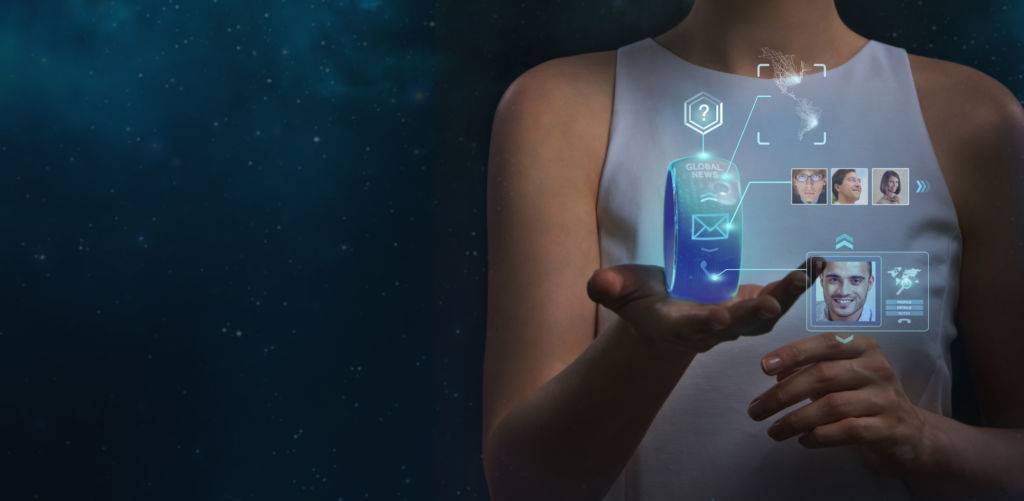
In this previous article – Circular Fashion – we provided and briefly analyzed the Accenture report “Circular x Fashion Tech Trend”. The international consulting firm found nine circular fashion technology concepts that can be used to generate sustainable value and to reach the next level of circularity. These concepts are divided into three main categories based on the features of the technologies used: digital, physical and biological.
The digital technologies of fashion are based on communication, electronics and IT. And this is this first category that we will analyze next.
Circular fashion is digital.
The fashion industry has just begun to unleash the potential of digital fashion technology concepts based on computer science, communication and electronics. These technologies are known for using more information intensity and physical resource connectivity than what the fashion industry has seen so far. We split the digital concepts of fashion technology into three groups: wereable items, circular models of consumption and the connected supply chain.
1. Wearables
Wearables are not only devices, but also connected clothing that influence our lifestyle.
Devices with wearable technology that have a positive impact on life quality, the social surroundings and the environment may include, for example, a fitness tracker that monitors health conditions.
By integrating wearables into fashion, it is possible to encourage the user to get involved and interact with the environment and in the end, to influence it. Tracking our own personal carbon footprint not only makes us more environmentally conscious. It also enables integrated solutions, such as suggesting local and ethical alternatives for stores. Energy needs could be met by integrating rechargeable batteries or even solar cells into a clothing item, making it an energy source for portable devices.
Connected clothing is very promising. In a digital tester, sensors can read tags or radio frequency identification threads (RFID) placed on the cothing the customer is testing, connected to an intelligent mirror. The customer can browse styling options, call a staff member to bring a different size, and even order additional matching clothing from inside the fitting room. All this to ensure that the customer gets the right size and that each shopping experience is well supported.
Sustainable impact
-
Higher probability of better utilization rates as a result of a better adaptation experience and informed and ethical purchasing decisions. In other words, customers only buy clothes they will use.
-
Greater awareness of the implications of one’s own behavior, eventually improving conscious consumption, reducing energy needs and waste.
-
Allow positive implications on the user’s health, since the wearable item provides real-time monitoring of health conditions.
Challenges to overcome.
-
Establish digital trust by protecting the integrity of each person while efficiently managing and utilizing an ever-increasing amount of data generated.
2. Circular consumption model.
Circular models have been around for centuries, but recently we have seen a significant change as new technologies allow the transformation from linear to circular fashion consumption models.
Customers are more aware than ever and demand more customized solutions. This trend is causing a shift from retailing of first-hand clothing, that is produced and sold in stores or online, to new models of consumption such as fashion as a service, where users can potentially only pay for the actual use of a selected item. Ultimately, it allows other users to share the clothing when otherwise, in a linear model; it would have been stored in a drawer.
This concept also includes the use of shared platforms that allow users to rent items, publish their own clothing for rental or sell. This approach increases the utilization rate of clothing throughout its life cycle.
In addition, the sharing economy is a new approach for doing business and challenges traditional ways of selling by connecting consumers to the resource, like a clothing.
This model of consumption prevents waste and allows clothing that would otherwise be underused to be monetized. Now, this transaction offers a temporary access instead of ownership. And at the same time, companies can stand out for their value added features, such as improved user experience, customer support and premium products.
Sustainable Impact.
-
Higher utilization rate because users select specific items and only pay for the actual use and then return them, this way clothes can be shared among multiple users.
-
Reduces waste of fabrics and natural resources used in production process by reducing the need to buy new clothes for a specific occasion.
Challenges to overcome.
-
There is a risk of a rebound effect where consumers start to consume more once it becomes “cheaper”, which will eventually cause consumption and waste levels to return to the levels we see today.
3. Connected Supply Chain.
Blockchain and IoT are two advanced technologies that create opportunities for a connected and transparent end-to-end fashion supply chain.
With distributed database protocols, Blockchain enables a complete audit trail throughout the entire fashion value chain. In addition, the IoT allows clothing to be connected across the same value chain.
Until now, manual intervention was needed to recycle a piece of clothing due to limited information about the article. An effort was required to determine the materials used in the clothing and whether they could be recycled. In other words, in the past there was a barrier for automated recycling. In fact, statistics reveal that most of the clothing currently being discarded could have been recycled.
In a connected supply chain, information is available throughout the entire value chain. For example, placing RFID tags on clothing and inventory, provides opportunities for instant traceability, improved inventory management and automated recycling.
Naturally, a connected supply chain also generates extensive digital information, where analytics can be used to establish circular perspectives that enable more predictable ways of working.
Sustainable Impact.
-
Automated textile-based clothing classification allows more efficient recycling and reduces waste, for example, a simpler classification between cotton and polyester clothing.
-
Improved logistics, inventory management and collection planning, help reduce waste, obsolete items and greenhouse gases emissions.
-
Allows transparency and instant tracking of both material sources and social aspects, for example, knowing exactly under what circumstances a particular clothing has been manufactured.
-
More information available to final consumers, allowing them to make purchasing decisions with more information.
Challenges to overcome.
-
Since technology plays an increasingly important role in people’s lives, it is essential to ensure both privacy and security. The first relates to the risk that your personal data will not be kept private, and the second relates to the risk that a data breach will occur and your personal data will fall into the wrong hands. Finding the right balance in building digital trust throughout the connected supply chain is critical.
Let’s embrace the power of digital clothing and make fashion circular!












































